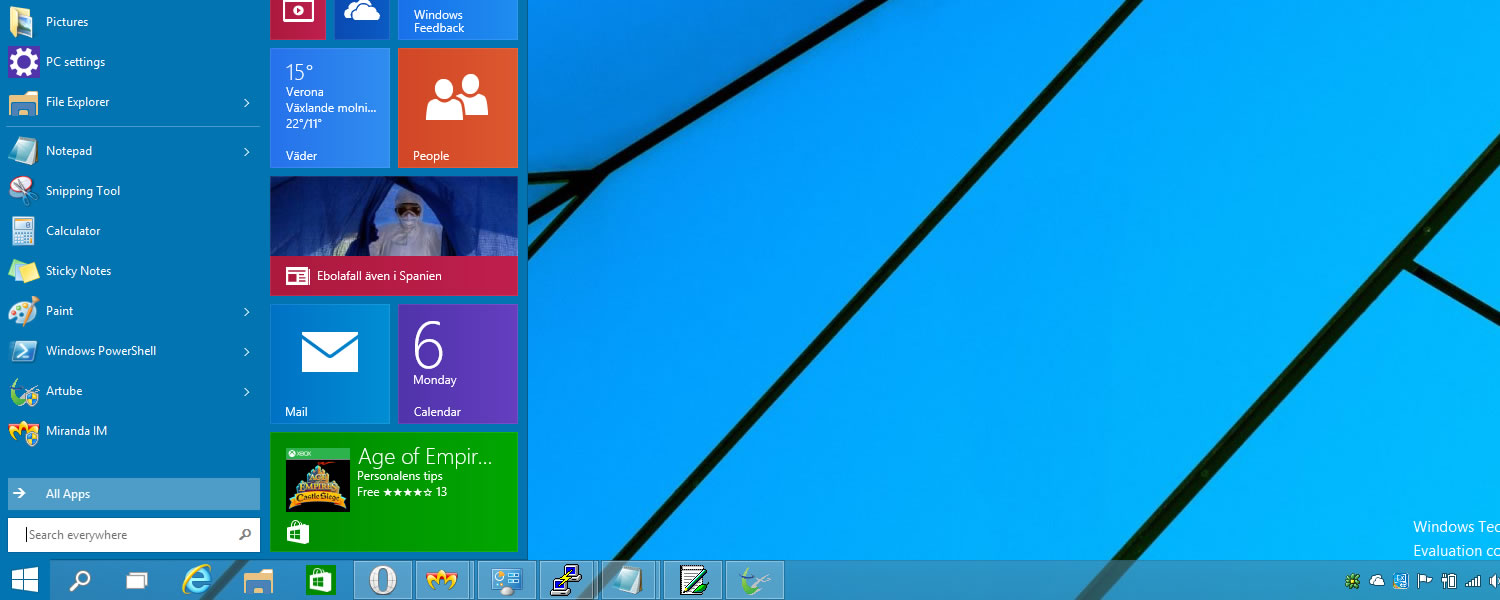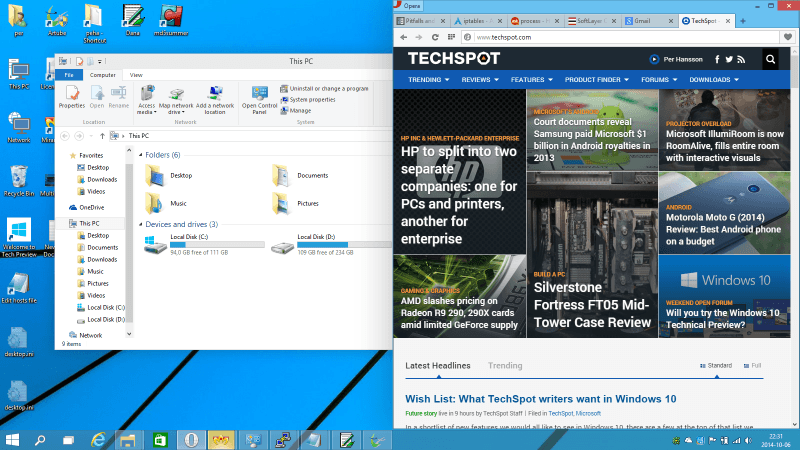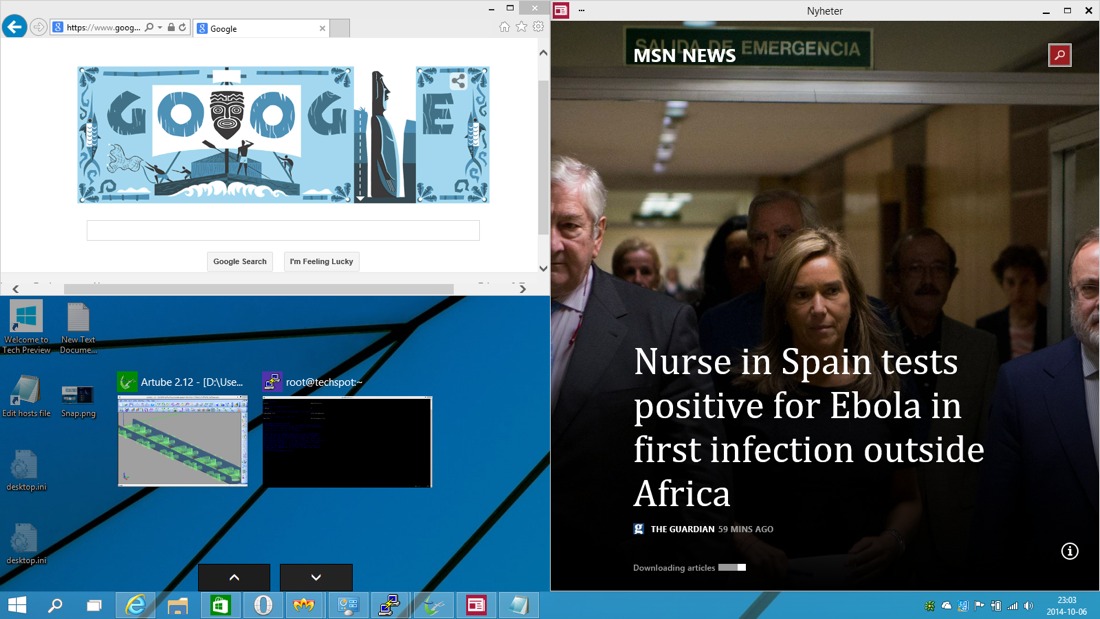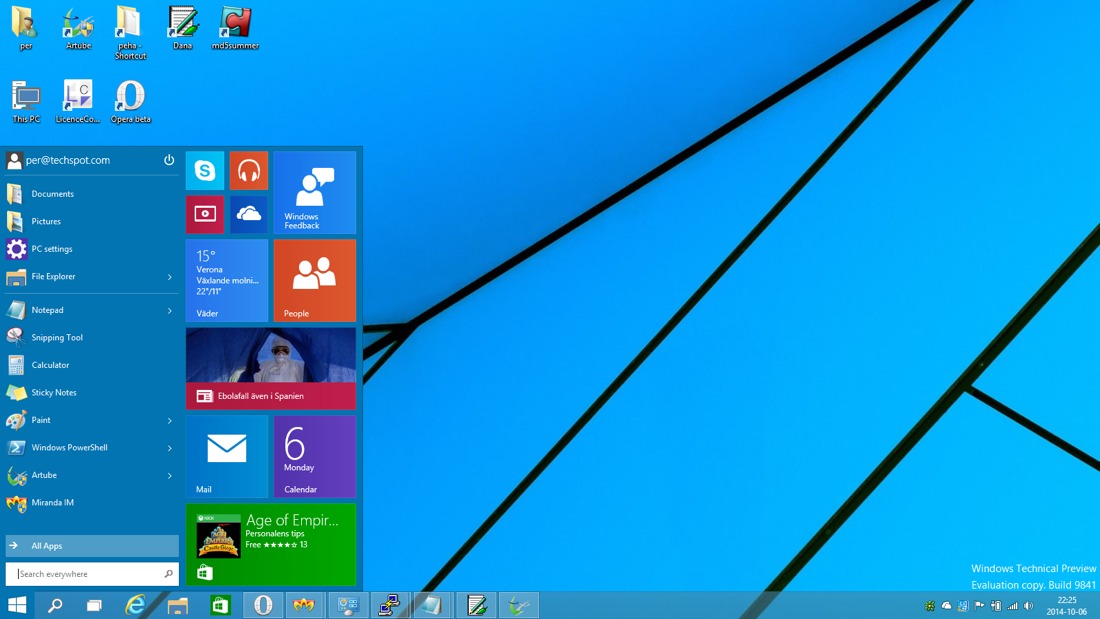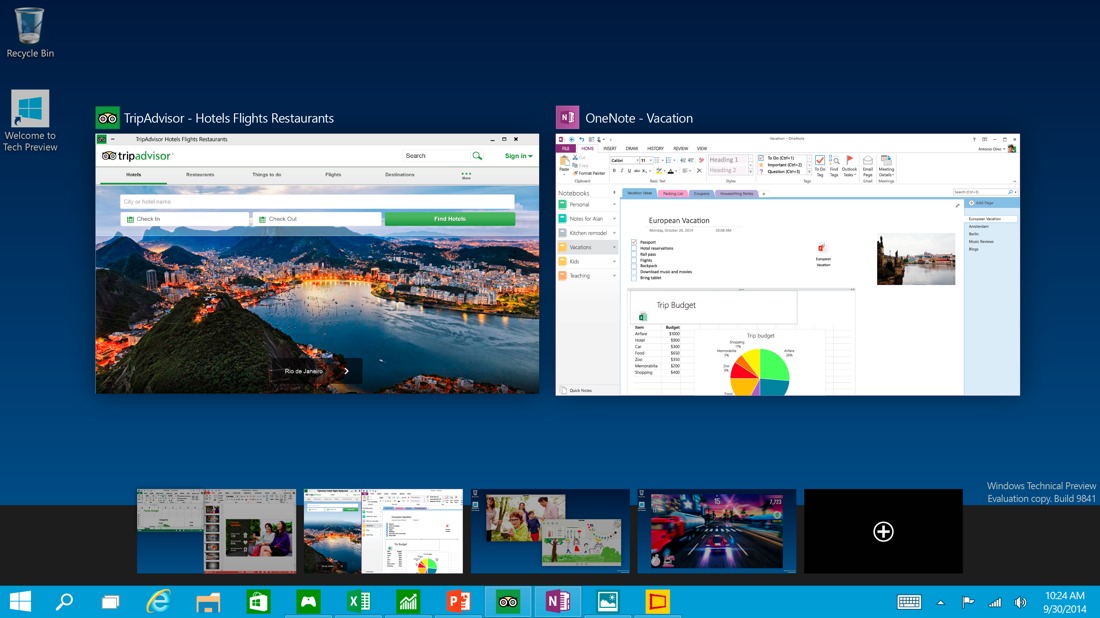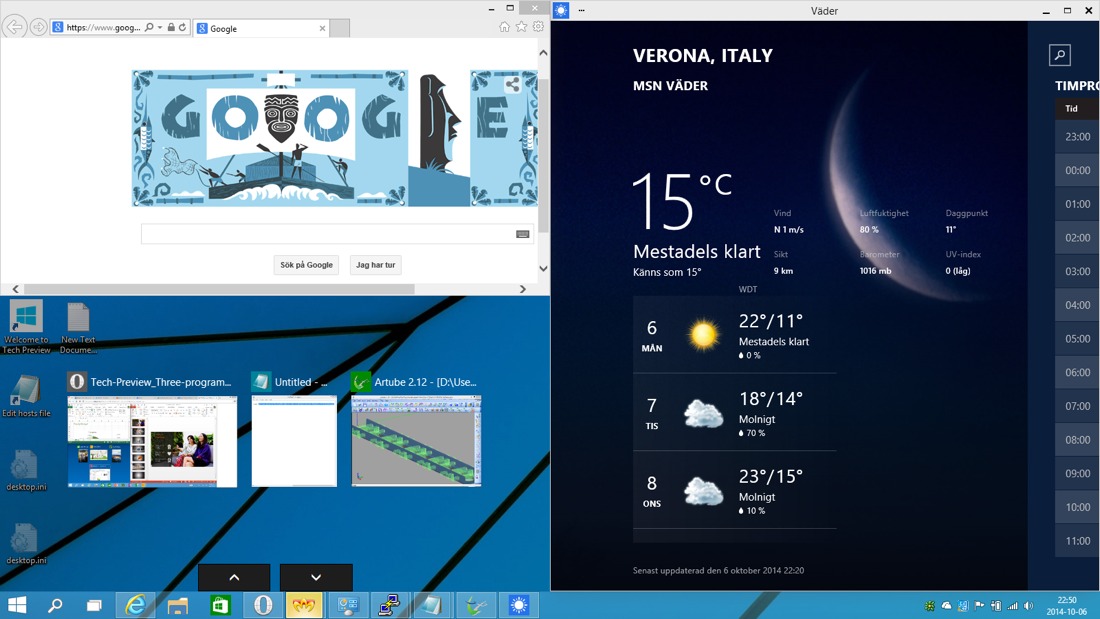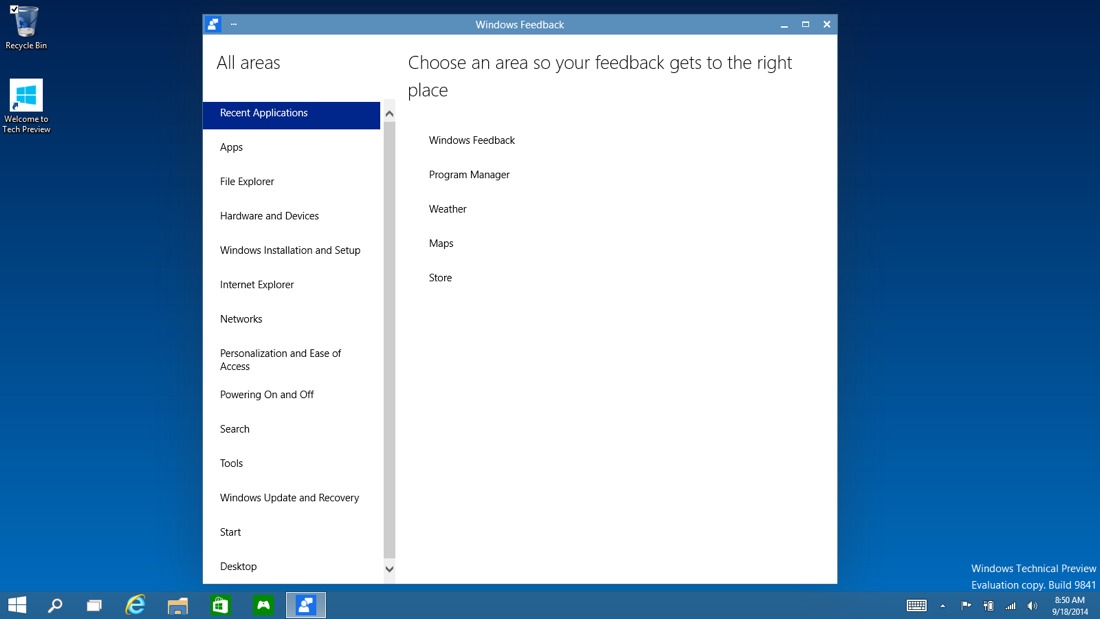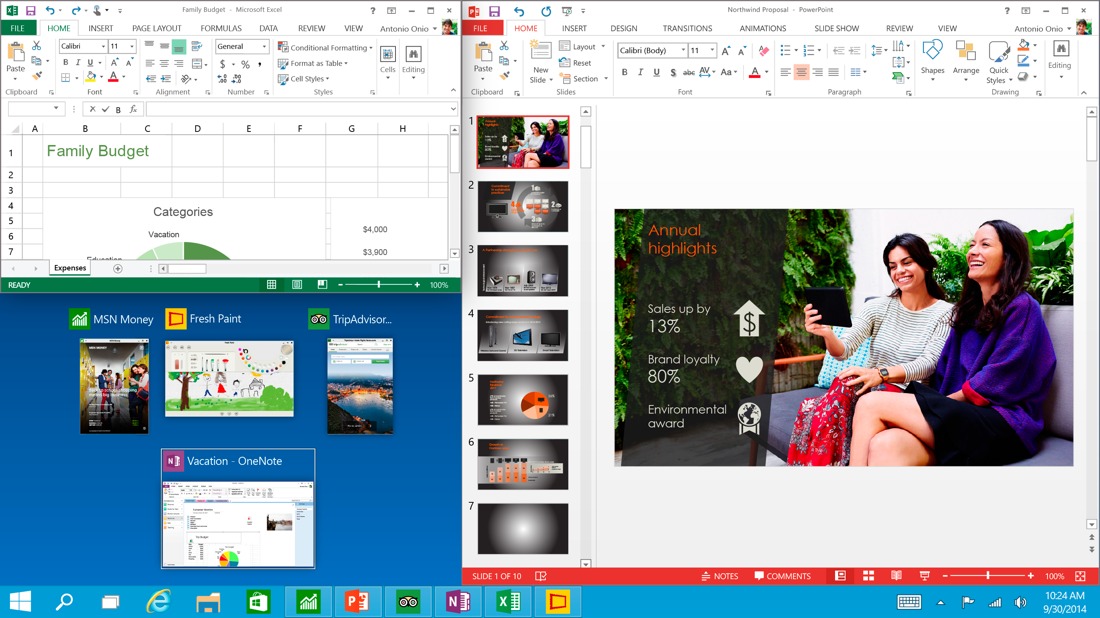In a shortlist of new features we would all like to see in Windows 10, there are a few at the top of that list we now know Microsoft is working on already: the return of the Start menu, less Modern UI where you don't need it, and other desktop-focused productivity enhancements like virtual desktops.
There are others that Microsoft believes to have tackled but in reality are sorely lacking, to name two big ones: universal search and 4k monitor/HiDPI support.
We asked TechSpot's staff what they thought of the Windows 10 announcement and what changes they would like to see on Microsoft's new OS iteration.
Julio Franco
Like every other Windows user, I felt like Microsoft heard my wishes when it announced Windows 10's desktop improvements. However I don't think Windows' release cycle is broken because of a lack of features, but because it's happened again and again that when a new Windows version arrives, it leaves us with the feeling that the next major revision will finally fix what they didn't get right in the first place.
Windows 8.1 should have fixed the Start menu's absence, but it didn't, and so the official remedy won't arrive until a full two years later. That's not acceptable and Microsoft should know better.
Which goes to my ultimate request for Windows 10. Microsoft has the necessary means to make a cohesive, elegant operating system that "just works" on modern hardware. We've been promised that for almost a decade and instead of opening new fronts I wish Windows 10 gets us to that point where the OS feels perfectly polished and finished from the moment you boot up, wake up from sleep, upgrade or backup your system, and so on. Windows 7 was ever so close to delivering that (fixing Vista's faults), and while Windows 8 did improve a lot behind the scenes, the lack of UI cohesiveness was a disaster.
Windows loyalists won't like to read this, but OS X has been delivering in this front for the past 3-4 years with a yearly cycle of free OS updates.
Steven Walton
I am excited for the arrival of Microsoft's latest OS and can't wait to explore the new features. Having said that I didn't have a problem with Windows 8 for the simple fact that it takes a quick download and a few seconds to fix it for free.
Apart from the missing Start button and worthless metro screen (for desktops) there isn't anything I found bad about the operating system. When compared to Windows 7, it is my opinion that Windows 8 was a better version (minus the Start menu issue), I think of it as a more polished version of 7 really.
Since the only thing I really want is the Start menu, it looks like I will get my wish.
Tim Schiesser
The one thing that irked me most about Windows 8 and 8.1 was the lack of a cohesive design between the 'Modern UI' - a.k.a. the new Start screen and its full-screen applications - and the desktop. As a desktop PC user I spend most time in the traditional Windows interface, and its design just doesn't meld well with the new style, looking like a slightly upgraded version of Windows 7.
In Windows 10 I want to see a full overhaul of the desktop UI, making it fit in with the Modern interface. I don't want to see old-style icons combined with flat icons throughout the OS, I don't want to see out of place gradients or transparencies: I want a unified style that's modern, visually pleasing and consistent. It'd also be nice if Microsoft would fix/improve high DPI scaling, allowing us to get the best out of high-resolution displays.
Matthew DeCarlo
I would like more attention paid to windows themselves in Windows 10. Aero Snap was a great first step but managing windows across several displays is clumsier than it needs to be. There are times when I want a keyboard shortcut to put a window in the corner half-screen vertically and half-screen horizontally (Windows key + Up and Left arrows to put it in the top left for instance), or the ability to hold control to select and drag many windows at once, or even just a profile setting that remembers where I like my windows to auto-snap them all back into place after a hectic day. Those types of features currently require third-party tools.
Shawn Knight
I've never been the type that likes change. My first few experiences with Windows 8 were dreadful; so much had changed visually that I felt lost (and I'm not just talking about the Start Menu, although that was a big part of it).
Based on what Microsoft has revealed regarding Windows 10 thus far, I'm the exact person they are targeting - the Windows 7 user that wants all of the performance improvements that come with a new OS without feeling like everything has changed.
That said, what I want to see most in Windows 10 is nothing new at all. Do all of the tweaks, enhancements and optimizations necessary to build a lightning-fast environment but do it behind the scenes. I simply want a speedy OS that I'm familiar with.
Per Hansson
When I initially tried the Windows 8 beta I had high hopes, I really liked many of the changes and thought I could easily live with some of the commonly voiced shortcomings. As I used the OS through the development phase however I became more and more distanced from it, just like with Windows Vista, I really felt that cohesiveness was lacking in the OS.
I'm writing this on the Windows 10 Technical Preview and in a way I'm having the exact same feelings. I'm having high hopes, many things to me are a godsend, like copy & paste into the command prompt, how come we did not have that 15 years ago?
But there are also jarring experiences, for example searching for "mouse" from the revamped Start menu brings up exactly one match, and it brings you to the Metro-based "PC Settings" which is sorely lacking in features, indeed not even mouse pointer speed was possible to adjust from there...
I have not had time to test all the new features, but I like what I see. I'm making sure to provide feedback for the things I think could be improved, and I hope you do the same. Because it felt like Microsoft turned a deaf ear towards it's user base with Windows 8, so here's to hoping this will change with Windows 10.
Rick Burgess
One of several changes I'd like to see is cost. Following its "Blue" initiative, it appears Redmond aims to give us quick, iterative Windows upgrades. Heck, Windows might even become a subscription or cloud-based offering someday.
If Microsoft's rapid-release mantra is in full swing by Windows 10, I'm hopeful Microsoft will finally re-evaluate its pricing. At $150 a pop for every PC you own, yearly upgrades will definitely have consumers re-evaluating the importance of staying up-to-date. Microsoft should lower its Windows pricing significantly, not through time-limited promos either, but through an honest to goodness price reduction. Offering free upgrades, Apple has set an interesting precedent for Mac OS X.
I think every Windows user would love to see free Windows OS upgrades. Of course, unlike Apple, "free" may be a little more complicated for Microsoft given its lack of vertical integration. How about 30 bucks? What would you be willing to pay for annual Windows upgrades, if anything?
What about you, our readers?
So there you have it. Though not everyone was completely put off by Windows 8, the general feeling is that it lacked clear direction and a cohesive design between the 'Modern UI' and traditional desktop.
Third party software helped fix a fair share of annoyances and then 8.1 took care of a few more, but moving forward Microsoft will need to show it has learned from its mistakes and prove that it can deliver something that feels more polished out of the box without upsetting a legion of power (and vocal) users – not the easiest task, for sure.
We know many of you have already taken Windows 10 for a spin and many more are planning to. From what you've read or seen so far, what do you feel is still missing? What would be the number one thing you'd like to see Microsoft address?
